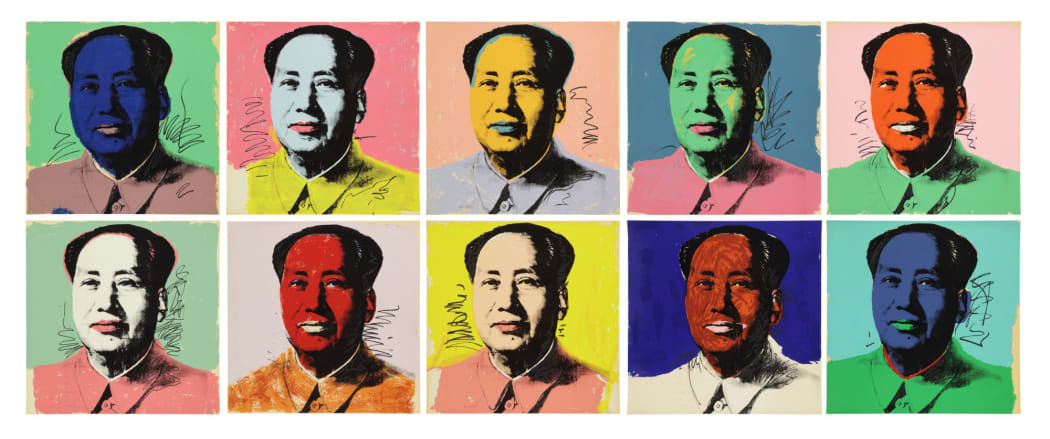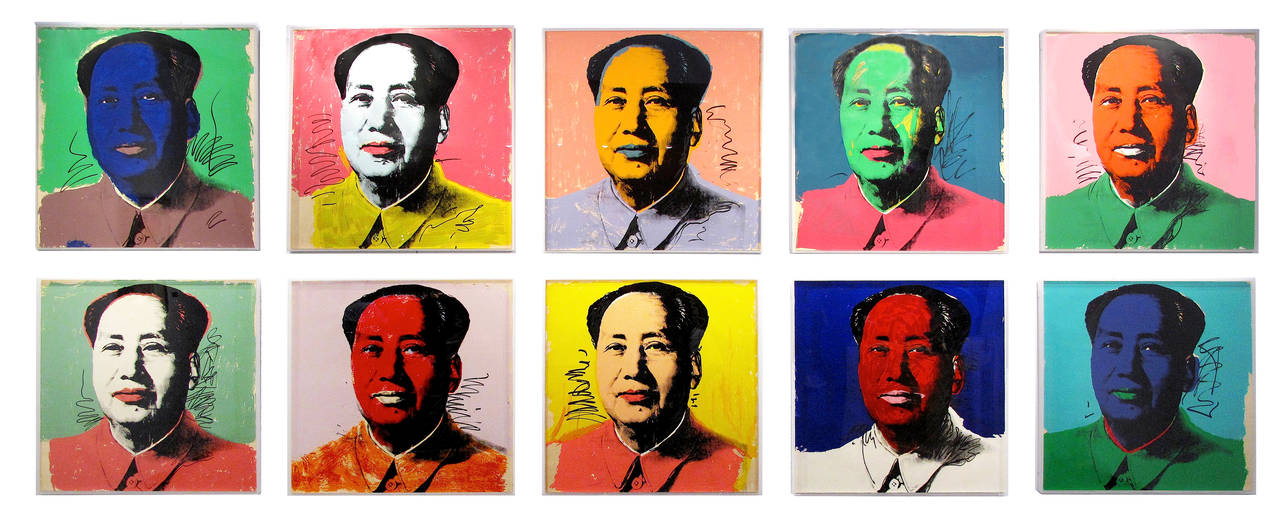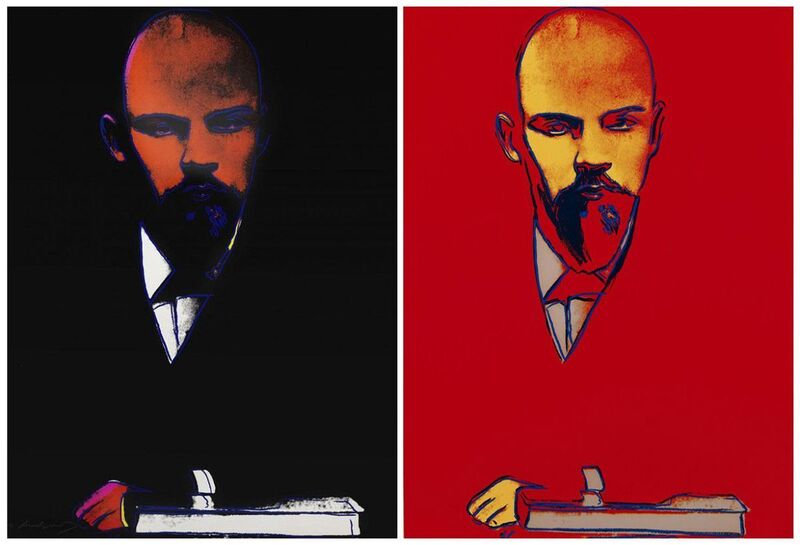
Pop Art
The pop-art movement, which emerged in the 1950s, drew inspiration from the images of consumer society and pop culture such as cartoon strips, television and film, pop music, magazines, billboards and advertisements. Reflecting the developments going on around him, Warhol interpreted his society of the time and, in particular, the changes taking place.
Beginning with a publicity shot of Marilyn Monroe, Warhol first began experimenting with creating celebrity portraits in the medium of screen printing in 1963. He showed a predilection for beauties such as Marilyn, Elizabeth Taylor and Jackie Kennedy while also portraying male icons such as Elvis Presley and Mick Jagger. While his initial attraction was to fame and fortune, and though he tended to cultivate the image of the shallow artist, Warhol occasionally strayed into the world of politics, choosing to create portraits of Chairman Mao and JFK as well.
Mao, 1972
Along with other communist leaders such as Joseph Stalin and Vladamir Lenin, Mao Zedong or Mao Tse-tung is considered one of the most important communist figures of the cold war. Mao Zedong served as the leader of the communist forces in China and he was responsible for leading one of the longest revolutions in history that began in 1927. He ruled China’s communist government from the time it was established in 1949.
Mao 1972 is a series of 10 colourway lithograph prints containing 250 signed works in each colour. In 1972 U.S. President Richard Nixon travelled to China to meet Chairman Mao Zedong, ending years of diplomatic isolation between the two nations. This historic event captured the imagination of Warhol, who, between 1972 and 1973, created 199 silkscreen paintings of Mao in various colourways.

Warhol’s idea for creating the Mao portraits was inspired and heralded by his long-time dealer and supporter Bruno Bischofberger4. Bruno suggested that Andy return to the medium of painting by featuring portraits of the most public and important figures of the 20th century. At the time, Mao had already risen to become the most famous man in the world. His images were available everywhere in China and because most of the images resembled a silkscreen, Warhol was immediately fascinated by the idea of reproducing them. Since Mao was a public figure whose face and appearance were acknowledged and respected by the public as a protagonist of public interest and because his cold war movement had also become an issue of public interest, Mao easily became a subject matter of Andy’s work. Explore the Mao portfolio.
Lenin, 1987
Vladimir Ilyich Ulyanov, better known by his alias Lenin, was a Russian revolutionary, politician, and political theorist. He served as the first and founding head of government of Soviet Russia from 1917 to 1924 and of the Soviet Union from 1922 to 1924.
Lenin (black and red) is a series of 120 signed prints that were created in 1987, just months before Warhol’s untimely death from surgical complications. The series marks a maturity in the artist’s work and gone are the pop overlays of contrasting colours that can be found in the Marilyn or Ingrid Bergman series. Instead here the colours are restricted – though not restrained in tone – to a few, lending the work the air of the mass produced political posters that made Lenin into a revolutionary figure.

It is also possible Warhol decided to produce Lenin for purely aesthetic reasons. In the most famous version the red of the ground and Lenin’s suit are contrasted with the bright yellow of his face and the blue of the drawn outline that contours his famous features. Similarly, the black version sees Warhol giving the Russian leader an orangey red face and hand, again highlighted by blue contours. In both Lenin has a foreboding look, his authority further emphasised by the bold colours and the positioning of his hand on a book.
Andy Warhol’s interpretation of Mao and Lenin resulted in developing brightly colored portraits that illustrated Warhol’s deep fascination with the clash of images between communist publicity stunts and American kitsch. By creating a glammed-up version of Mao and Lenin, Warhol could transform otherwise intimidating and mysterious images of powerful political figures into a glamorised pop icons, bringing them to the masses in a way to both challenge and question their cult of personality as well as revel in the beauty of his artistic genius,
For more information on our Andy Warhol screenprints for sale, contact our gallery via sales@andipa.com or call +44 (0)20 7589 2371 to speak to our team.